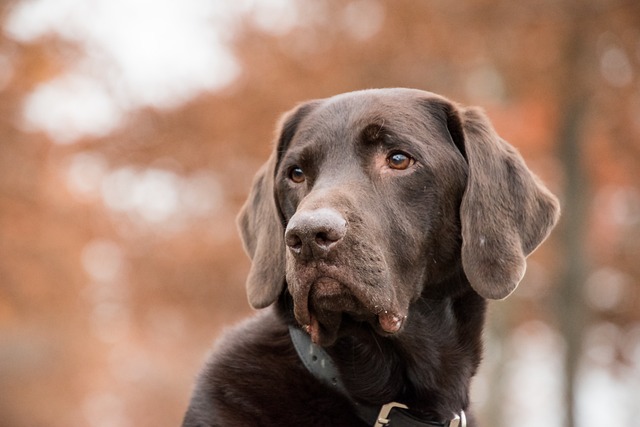
How do i train my dog to be obedient?
Watching your dog dart across the park ignoring your calls isn’t just frustrating—it can put them at risk near busy streets or public spaces.
That determined little pull on the leash is a common, yet frustrating, part of early walks. Your puppy isn't being naughty; they're often just excited, curious, or haven't learned the rules of the road yet. Turning pulling into polite walking hinges on patience, consistency, and making walking with you way more rewarding than lunging ahead. Forget harsh corrections – positive reinforcement is the key to lasting success.
Start by managing expectations. A young puppy has a short attention span and boundless energy. Keep training sessions incredibly brief, especially at first – five to ten minutes of focused practice is plenty. Always begin in a very low-distraction environment, like your living room or quiet backyard. High-value treats (think tiny bits of cheese, chicken, or special puppy treats) are non-negotiable ammunition here. You need something your pup finds irresistible.
The core principle is simple: reward the behaviour you want. The moment your puppy walks with a loose leash, even just for a step or two, mark that instant with a happy "Yes!" or a clicker, and immediately deliver a treat. Timing is absolutely critical. You're capturing the exact moment the leash is slack. Don't wait until they've already started pulling again. Treat frequently at first to build the association: loose leash = delicious things happen!
When your pup inevitably hits the end of the leash and pulls, here's your strategy: Stop. Completely. Become a tree. Plant your feet and wait. Avoid jerking the leash back or saying "no" – just be still and silent. The pulling removes the reward of moving forward. The instant the leash loosens, even slightly because they glance back or take a tiny step towards you, mark it ("Yes!"), praise warmly, and start walking again, rewarding immediately for those first few loose-leash steps. This teaches them that pulling makes progress stop, while staying near you makes the walk continue.

Use movement itself as a reward. If your pup is walking nicely beside you, keep moving – that's enjoyable for them! When they pull and you stop, movement is withheld. Once the leash slackens, movement resumes. This clear cause-and-effect is powerful for puppies. If your pup is particularly stubborn or distracted, try changing direction frequently when they are walking nicely. A cheerful "This way!" and a turn can keep them engaged and checking in with you, earning more rewards.
Understanding leash laws and etiquette is crucial. Across most urban and suburban areas in the US, Canada, and Europe, leash laws mandate keeping your dog leashed in public spaces, often specifying a maximum length (typically 6 feet or 1.8 meters). Using a longer line where permitted requires even more control to prevent tangling or your dog approaching others uninvited. Allowing your puppy to pull towards or jump on people, even if friendly, is inconsiderate and can be intimidating. Respecting personal space is paramount. Always, always carry waste bags and clean up immediately – failing to do so isn't just rude, it's often heavily fined and damages community goodwill towards all dog owners. Remember, off-leash freedom is usually restricted to designated areas only; assuming otherwise is risky and often illegal.
As your puppy improves in quiet areas, gradually introduce more distractions: a slightly busier street, then perhaps the edge of a park. Arm yourself with those high-value treats! If they lock onto a distraction and start pulling, increase your distance from the trigger if possible, use your "stop and wait" technique, and heavily reward any disengagement or look back at you. Sniffing is important mental exercise, so incorporate short, designated "go sniff" breaks on cue after a period of good walking. This teaches them they get exploration time, but it happens on your terms.
Setbacks are normal. A particularly exciting squirrel, another dog, or just a bad day can unravel progress. Stay calm. If things get overwhelming, shorten the walk or return to a less distracting environment to rebuild confidence. Never punish fear or frustration. If your puppy shows extreme reactivity (excessive barking, lunging) or seems genuinely frightened on leash, consult a certified professional dog trainer (look for credentials like CPDT-KA, KPA-CTP, or similar in your region) who uses force-free, positive methods. They can provide tailored strategies. Training polite leash walking takes consistent effort over weeks or months, not days. Celebrate the small wins – every step without tension builds towards a lifetime of enjoyable walks with your polite, safe, and happy canine companion.

Watching your dog dart across the park ignoring your calls isn’t just frustrating—it can put them at risk near busy streets or public spaces.

New puppy owners often find themselves rushing to clean up accidents before they set in, and that’s where puppy pad training becomes a game-changer.

If you've noticed your dog's waistline disappearing and your veterinarian has mentioned those few extra pounds, your first instinct might be to simply reduce the amount of food in their bowl.

Training a dog to use a designated spot indoors isn’t as daunting as many new owners fear, but it does take consistency and an understanding of your pet’s needs.

That moment of dread on a walk is all too familiar for many new dog owners. You see another dog approaching down the sidewalk of your neighborhood

If the sight of another dog on your neighborhood walk makes your heart sink as your own dog erupts into a frenzy of barking and lunging, you're not alone.